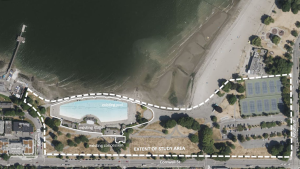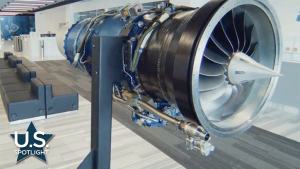Poor maintenance, lack of pilot training and an overloaded aircraft were some of the factors cited in a report into a plane crash last year that killed five construction executives.
Transportation Safety Board
Poor maintenance, lack of pilot training and an overloaded aircraft were some of the factors cited in a report into a plane crash last year that killed five construction executives.
The Transportation Safety Board (TSB) recently published the findings of an investigation into the crash of a plane on March 28, 2008 near Wainwright, Alberta.
The pilot of the single-engine Piper PA-46 Malibu, was Reagan Williams, 41, who was the new president of A.D. Williams Engineering Inc.
Williams and four other executives took off from Edmonton’s City Centre Airport and were on their way to a meeting at the company’s Winnipeg office. Shortly after the aircraft leveled off at 27,000 feet, it began to climb and descend erratically.
“When contacted by the controller, the pilot reported autopilot and gyro/horizon problems and difficulty maintaining altitude,” said the TSB report.
“Subsequently, he transmitted that his gyro/horizon had toppled and could no longer be relied upon for controlling the aircraft.”
The report noted that Williams had noticed problems with the plane’s gyroscope unit on previous flights.
The gyroscope acts as an artificial horizon and helps the pilot keep the plane level.
Williams had the unit and the associated autopilot computer removed and bench tested before the flight to Winnipeg.
The signals from the unit to the autopilot computer were found to be unstable or jittery, but within bench test parameters.
An overhaul was recommended, but could not be performed until the following week.
This led Williams to request that the unit be reinstalled to complete the trip.
During the flight, Williams was forced to use other instruments to control and keep the plane level.
His last documented training in flying by hand was in May 2001. It was on the company’s previous aircraft.
There is no record of whether or not he had previously hand-flown this aircraft at altitude.
In addition to this problem, the aircraft’s gross take-off weight exceeded the limit by about 857 pounds.
This caused the plane to be aft-heavy or off centre. Both of these factors decreased the plane’s stability and handling.
As Williams struggled for control, the plane went into an uncontrolled nosedive, which caused the wings and tail to break off.
The craft crashed into the scrub brush and snow on the upper banks of the Battle River.
The wreckage was scattered over a four-kilometre-wide area.
The crash also claimed the lives of Phil Allard, the company’s chief financial officer, Rhonda Quirke, another company executive, Ledcor Construction’s Trevor Korol and Jordan’s Flooring employee Shaun Stewart.
There were no company pilot training and qualification records as required by the company operations manual.
There was also no record of weight and balance calculations for any flight of this aircraft, which is also required.
Based on passenger manifests and fuel loads, 12 previous flights were similarly overloaded.
The aircraft was being maintained by a local organization that was not qualified to work on this particular model of jet propeller plane.
The TSB examination of the gyroscope revealed significant internal wear and damage that pre-dated the crash.
The instrument had not been overhauled since it was installed in 1995.
The manufacturer advised the TSB, that the average overhaul life is about three years.
“There were a number of deficiencies identified in this investigation, such as no pilot records, no quick-donning oxygen masks, flying overweight and out of C of G (centre of gravity) range, no records of weight and balance, and unapproved maintenance,” said the report.
“In accordance with the CBAA (Canadian Business Aviation Association) standards, the company was required to have a SMS (safety management system) to detect and mitigate such deficiencies, and a risk assessment should have been completed within 12 months of the issue of the POC (private operators certificate). However, a risk assessment was not done.”
Reagan Williams became the president of A.D. Williams Engineering Inc after his father, Allen Williams, 65, died in a plane crash in October 2007.
Allen Williams died when the Cessna 172 he was flying crashed in rugged terrain near Golden, B.C.
The plane crash also killed Steven Sutton, the firm’s chief financial officer.
The two men were attending a business retreat.
Miraculously, the only occupant to survive the crash was William’s three-year-old granddaughter Kate Williams, who rescuers found hanging upside down in the wreckage.
She was strapped into a child safety seat.










Recent Comments
comments for this post are closed